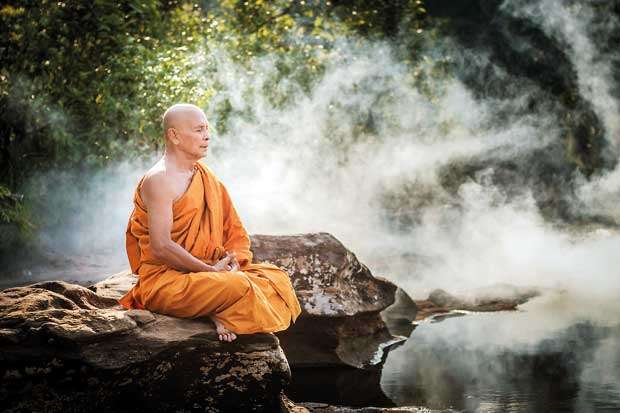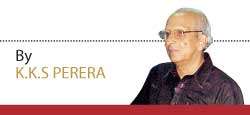22 Nov 2018 - {{hitsCtrl.values.hits}}

 Dhamma is a very simple procedure, which is taking place everywhere and every moment in every being, which anybody can comprehend as soon as it is uncovered of the veil of mystery in which it was encircled by the attitude, thinking and way of life. – Engels: [InDialectics of Nature]
Dhamma is a very simple procedure, which is taking place everywhere and every moment in every being, which anybody can comprehend as soon as it is uncovered of the veil of mystery in which it was encircled by the attitude, thinking and way of life. – Engels: [InDialectics of Nature]
For example, Buddhism de-emphasises individualism by highlighting anatta (no self) and anicca (impermanence) as two of the three symbols of existence. All beings are a mere combination of the ever-changing aggregates. Thus, a Buddhist cannot concede individuality because concepts like “I,” “me, mine” and “you, yours” are only illusions of such composites, which erroneously encourage us to consider that people are independent, static beings. We use these provisions only as a matter of convenience in as much as verbal communication does not have the capacity to describe a persistently changing “being.”
The Katina Cheevara is brought to their respective temples in processions and offered to the resident Upasampada monks, who observed Vas [rainy retreat] for nearly three months. The offering of “Katina Cheevaraya” is considered as a highly meritorious act, which takes place in most of the Temples during the month of Ill. Another among other significant things that had happened on the Ill full moon Day and recorded in the Buddha scripts has been that a deputation of 60 Arhants were launched from Dhamma preaching to a huge crowd of people.
On the other hand, if you learn the art of Dharma, you start understanding peace and concord within yourself. Keep your mind pure and full of love
Oh! Bhikkhus for the Welfare of the many, for the Happiness of the many, through Compassion to the World, Go Ye Forth, and spread the Doctrine of Buddha Dhamma for the benefit of Devas and Human Beings. In this manner, the first Buddhist Missionaries commenced their journey on Ill Poya day in various directions.
Alexander Berzin, scholar, author and teacher of Tibetan Buddhism, writing in his web speaks of similarities between Buddhism and Islam.
The Kalachakra is a term used in Vajrayana Buddhism meaning wheel of time or ‘time-cycles’. It is a tantric teaching in Tibetan Buddhism.
It circles around the concept of time and cycles from the cycles of the planets, to the cycles of human inhalation, it educates the practice of working with the most delicate energies within one’s body on the path to illumination.
Another interpretation of Kalachakra’s forecast is that it refers to internal war against mental and exciting aggression, that it largely refers to the inner battle of the religious practitioner against barbarian tendencies.
Berzin says, the Kalachakra presentation of the mythical Shambhala war and the Islamic discussion of jihad show remarkable similarities. Both Buddhist and Islamic holy wars are defensive tactics for stopping attacks by external hostile forces, and never offensive campaigns for winning converts. Both have internal spiritual levels of meaning, in which the battle is against negative thoughts and destructive emotions. Both need to be waged founded on ethical principles, not on the basis of unfairness and hatred. The Kalachakra literature in fact refers to the concept of jihad in the prasangika manner of taking it to its rational extreme to demonstrate a position to avoid.
According to Berzin’s studies, many leaders have distorted and oppressed the concept of jihad for power and gain. The same has happened with Shambhala and its argument of war against destructive alien forces. Just as opponents of Buddhism could focus on abuses of Kalachakra’s peripheral level of religious battle and dismiss the internal level, and this would be unfair to Buddhism as a whole; the same is true regarding anti-Muslim critics of jihad. The recommendations in the Buddhist tantras regarding the holy teacher may be useful here. Almost every religious teacher has a mixture of good character and faults. Although a follower must not deny the harmful qualities of a teacher, to dwell on them will only cause anger and despair. If, in its place, a disciple focuses on a teacher’s positive qualities, he will gain insight to follow the spiritual path.
The same can be spoken about the Buddhist and Islamic wisdom regarding holy wars. Both religions have seen abuses of its calls for an external battle when vicious forces threaten spiritual practice. Without refuting or dwelling on these abuses, one can achieve inspiration by focusing on the payback of waging an inner holy war in either faith. In both religions, the main importance is on the internal spiritual battle against one’s own unawareness and destructive ways. The caliph was demonstrating his influence to rule the entire Islamic world after conquering his brother in a civil war. He did not force all the Buddhists of Kabul to convert, nor did he destroy the monasteries.—Refer: Berzin ArchivesWebsite:November 2001
What one’s mind holds, at a given moment, is Dhamma.One has to begin to understand the Dharma through realisation. It is free from all sectarian dogmas, beliefs, rites and rituals. Even sectarian names are not needed. You may or may not call yourself a Sinhalese, Tamil or a Muslim, but you should be a Dharmic being, a person existing with a life of Dharma. This means that you should remain pure. If your mind remains uncontaminated, then all your other dealings, vocal or physical, will obviously become pure.
Another interpretation of Kalachakra’s forecast is that it refers to internal war against mental and exciting aggression, that it largely refers to the inner battle of the religious practitioner against barbarian tendencies
On the other hand, if you learn the art of Dharma, you start understanding peace and concord within yourself. Keep your mind pure, full of love and concern; the tranquility and harmony that is generated within infuse the mood around you. Anyone who gets in touch with you at that time establishes experiencing peace and concord. You are doling out something good that you have. This is Dharma, the art of living.
We desire to discover for ourselves, with certainty and ask the question ‘what is the purpose of life? To find the answer to this we must be rid of all dogmas, religions, philosophies, creeds, races, nationalities and rites, because we cannot discover our purpose in life with all these hindrances.
So long as there are restrictions, there is grief and it is from sadness that all men would escape. They are trying to find a way out of anguish, out of their entanglement in the wheel of sorrow and pain. In the attainment of excellence is Liberation to be found...grief and joy, pain and happiness, light and shade are the same thing. True conception is the outcome of concord which is perfection, the fragile poise of reason and of life...Have no fear of life and you will have no fear of death. The world is in an awful state where the men are caught in many a social and environmental influences which narrow their intellect and therefore limit their viewpoint and their contentment.
Surely, perception ought to take the place of our abstract thinking. The unconditioned mind can be associated with insightful mind. Life is not so very easy and the persons must have the strength and the ability not to be caught in the influence of unevenness. To find out for oneself what is right, all influence must end. There is no ‘good’ conditioning or ‘bad’ conditioning; there is only liberty from all conditioning. There are all kinds of things in life. Life is like the deep sea, which is tremendously deep, having vast currents and is teeming with all kinds of life. And self-determination from the very structure of thought is to be a light to one. To know yourself you need not read a book, go to a priest, to any psychologist.
The whole wealth is within yourself. In this light all action takes place. There is no ‘how’, no arrangement, and no practice. There is only the seeing which is the doing. One has to see, not through the eyes of a different person. As a mirror reflects all things held facing it, so when one’s mind-mirror is quiet, one will be able to see a replicate in it the true quality of oneself and of the other one’s mind can discover what is true only when it is liberated from all conditioning, not when it merely repeats certain words or quotes the books called scriptures. Such a mind is not free. It is only the free mind that can be imaginative and it can be creative only when it is open, free from conditioning like the following of a pattern, a principle, or a tradition set up by an organized religion. It is only the free mind that can find out or perceive the truth of something. One has to discover it every instant of the day as one is living.
Life is like the deep sea, which is tremendously deep, having vast currents and is teeming with all kinds of life. And self-determination from the very structure of thought is to be a light to one.
Among other significant events of Ill; Jatila monks Uruwela Kassapa, Nadie Kassapa and Gaya Kassapa who followed a different religion and living in Neranjala village, after listening to Buddha’s preaching understood the dhamma. Saripuththa thera told Buddha that he was weak and feeble and he would not be able to return after seeing his mother at his native place and he would attain Parinirwana there. Thus Saripuththa started his sojourn to see his mother. He lastly preached Dhamma to his mother, who realized dhamma.
May all Beings be Happy!
The writer can be contacted at [email protected]
30 Nov 2024 2 hours ago
30 Nov 2024 3 hours ago
30 Nov 2024 4 hours ago
30 Nov 2024 6 hours ago
30 Nov 2024 9 hours ago